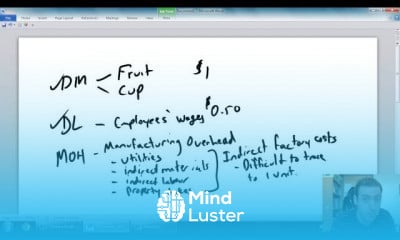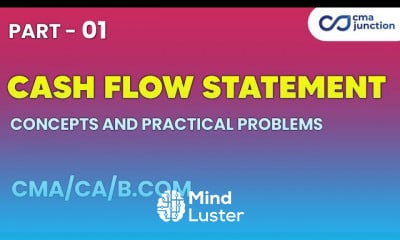How to Allocate Joint Costs using Net Realizable Value
Share your inquiries now with community members
Click Here
Sign up Now
Lessons List | 9
Lesson
Comments
Related Courses in Business
Course Description
A joint cost is a cost that benefits more than one product, while a by-product is a product that is a minor result of a production process and which has minor sales.Are joint costs allocated to by products?
Joint Cost Allocation
Allocate joint costs to the primary output products of the joint process, not the incidental byproducts or scrap. Allocate them using a physical measure or a monetary measure.What are examples of joint products?
Examples. The processing of crude oil can result in the joint products naphtha, gasoline, jet fuel, kerosene, diesel, heavy fuel oil and asphalt, as well as other petrochemical derivatives. The refinery process has variable proportions depending on the distilling temperatures and cracking intensity.What is joint cost example?
A joint cost is a kind of common cost that occurs after a raw product, such as a sunflower crop, undergoes two separate production processes. For example, the cost of fertilizing and harvesting sunflowers qualifies as a common cost. ... Another example of joint costing is feeding both sheep and cattle.
Trends
French
Data Science and Data Preparation
Formation efficace à l écoute de l
Graphic design tools for beginners
Artificial intelligence essentials
Learning English Speaking
Essential english phrasal verbs
MS Excel
Electrical engineering for engineer
Build a profitable trading
American english speaking practice
Build a tic tac Toe app in Xcode
YouTube channel setup
Design and Analysis of algorithms DAA
Python for beginners
Marketing basics for beginners
Figma for UX UI design
Magento Formation Français
Web Design for Beginners
Computer science careers
Recent
Data Science and Data Preparation
Growing ginger at home
Gardening basics
Ancient watering techniques
Grow mushrooms
Growing onions
Veggie growing
Bean growing at home
Growing radishes
Tomato growing at home
Shallot growing
Growing kale in plastic bottles
Recycling plastic barrel
Recycling plastic bottles
Grow portulaca grandiflora flower
Growing vegetables
Growing lemon tree
Eggplant eggplants at home
zucchini farming
watermelon farming in pallets



















